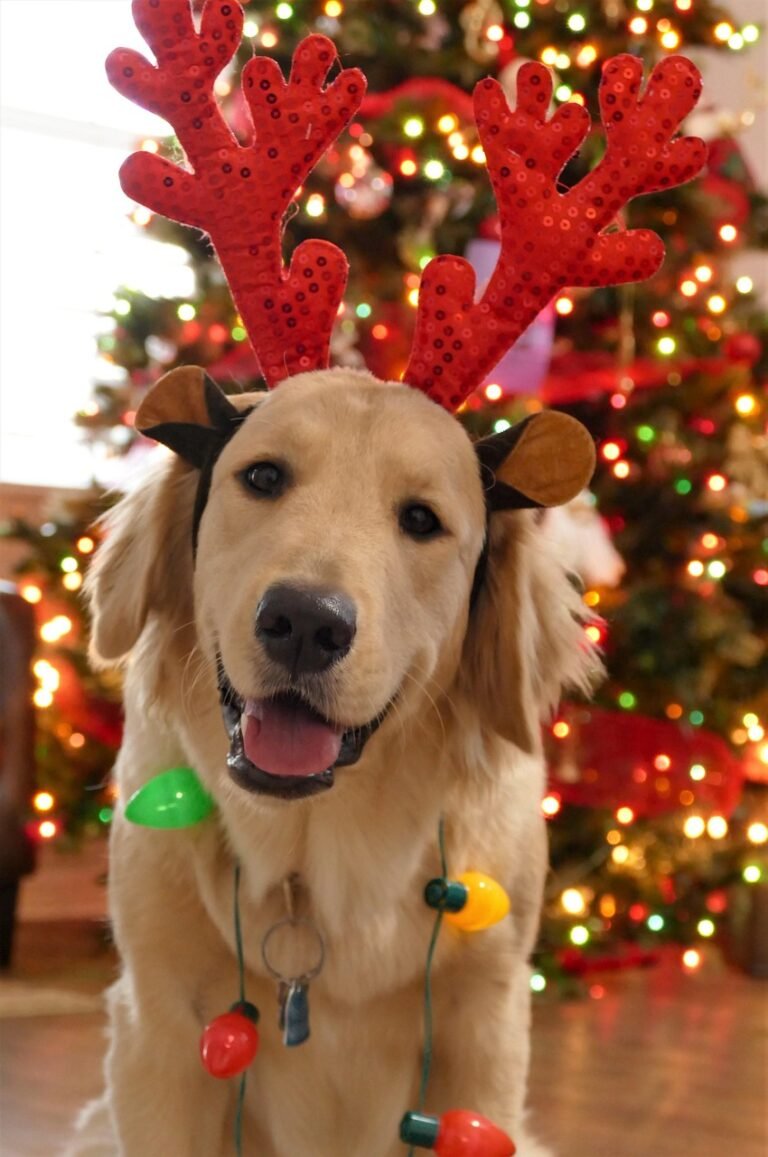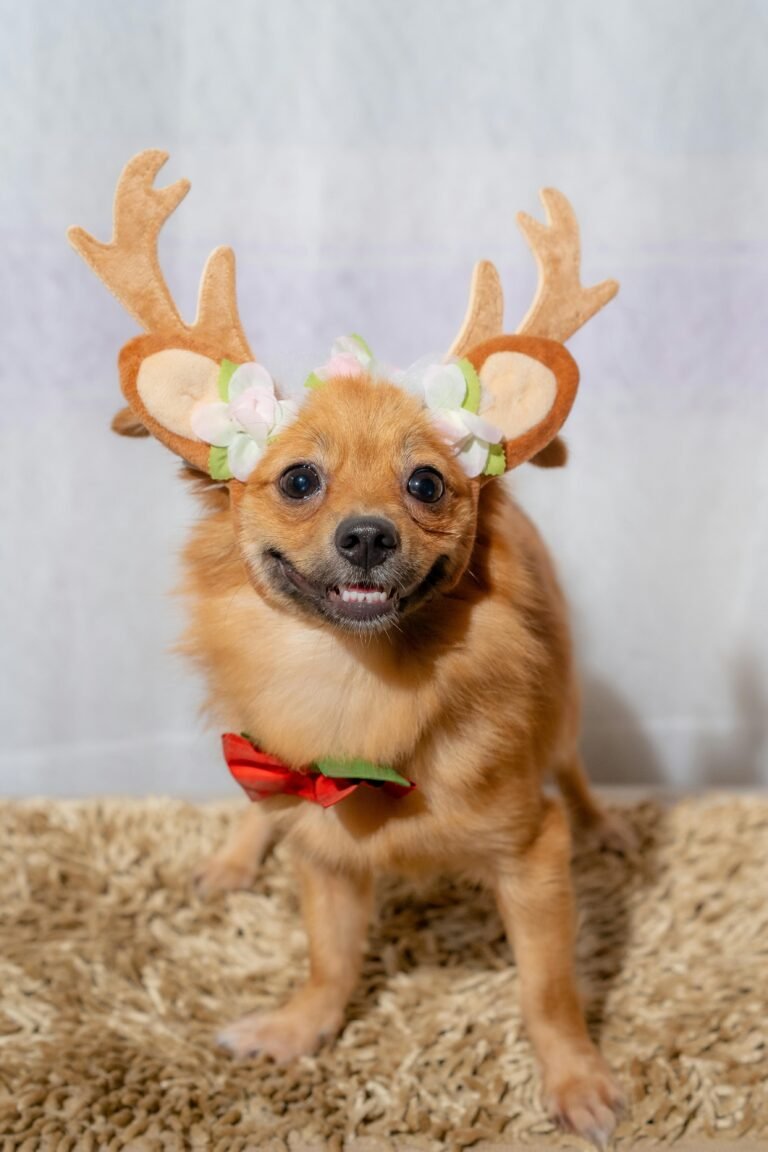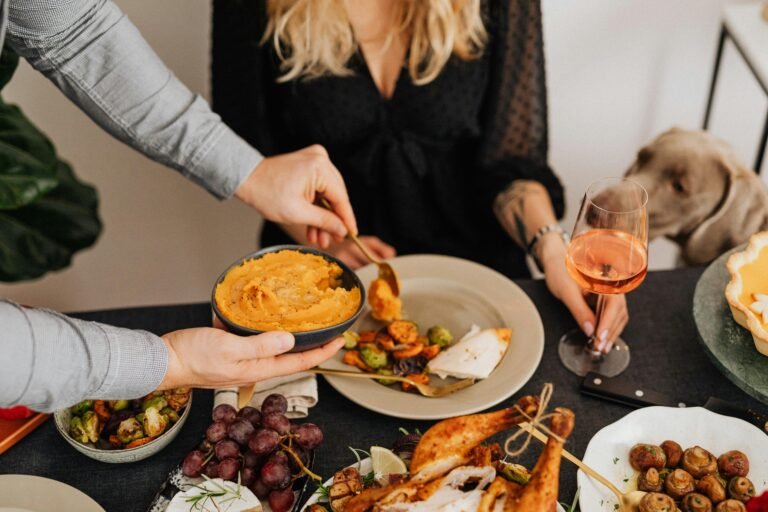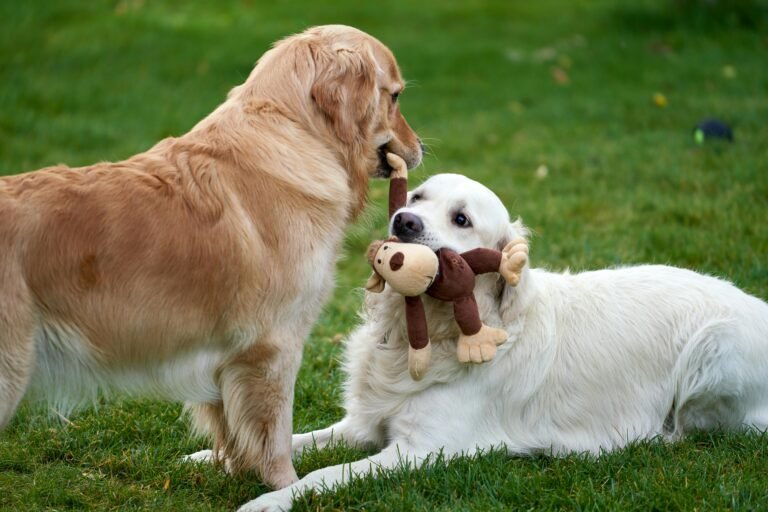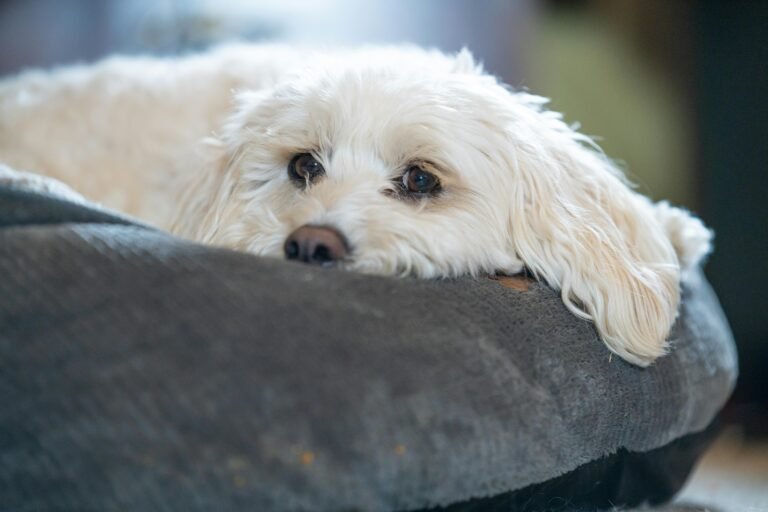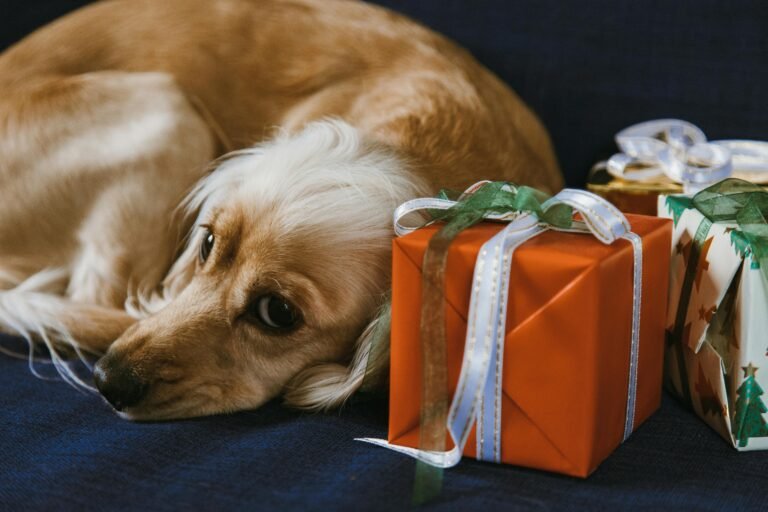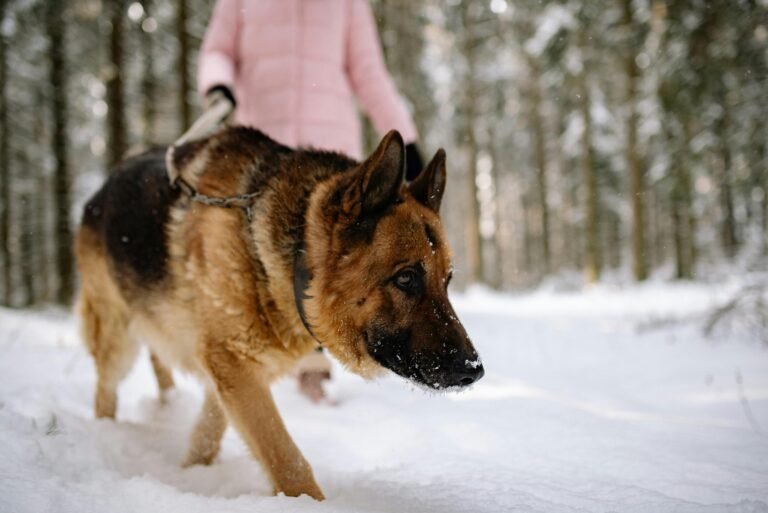Introduction
The holidays bring joy, laughter, and a full house of family and friends — but for dogs, all that excitement can feel like chaos. New faces, unfamiliar scents, loud conversations, and tempting food smells can overwhelm even the most social pup. Whether your dog loves people or prefers peace and quiet, a little preparation goes a long way toward creating a stress-free holiday for everyone. Here’s how to host guests during the holidays while keeping your dog happy, calm, and safe.
Understand Your Dog’s Social Style
Not all dogs are natural hosts. Some love being the center of attention, while others prefer observing from a distance. Before the doorbell rings, take a moment to consider your dog’s comfort level:
- The social butterfly: Greets every visitor with joy but might need reminders not to jump or get underfoot.
- The shy observer: Needs space and quiet time to feel secure around guests.
- The watchdog: Takes their job seriously and may bark or patrol when new people arrive.
Knowing your dog’s personality helps you plan the right environment — whether that means setting up a cozy retreat, introducing guests gradually, or giving them structured social time.
Set Boundaries Before Guests Arrive
Holiday chaos often begins at the door. The key to calm greetings is structure and preparation. Before guests arrive:
- Exercise first: A long walk or play session helps burn off energy so your dog is calmer when people enter.
- Use a leash or baby gate: Control the initial greeting to prevent jumping or door dashing.
- Have treats ready: Reward calm behavior as guests arrive, reinforcing positive manners.
If your dog tends to get overexcited, let them meet visitors one or two at a time after the initial excitement fades. First impressions matter — for everyone!
Communicate With Your Guests
Not all guests are dog-savvy. Some might be nervous, while others (especially kids) may overwhelm your pup with affection. Take a few moments to explain your dog’s preferences and any house rules:
- “Please let Bella approach you first — she’s shy at first but warms up quickly.”
- “No table scraps, please — she’s on a special diet.”
- “If she goes to her bed, that’s her ‘quiet zone.’ Let’s give her space there.”
Setting expectations early prevents stress for everyone — and protects your dog from unwanted food or attention.
Create a Dog-Friendly “Retreat Zone”
Even social dogs need downtime. Set up a quiet, cozy area where your dog can retreat when the energy gets too high. This could be a spare bedroom, a gated-off hallway, or a crate with soft bedding and a favorite toy.
Add soothing elements like:
- A white noise machine or soft music to mask noise.
- Familiar scents — an unwashed T-shirt of yours or their favorite blanket.
- Chew toys or frozen treats for distraction.
Encourage your dog to use this space freely — it’s their “safe zone,” not a punishment area.
Manage Food Temptations and Table Scraps
Holiday tables overflow with tempting smells, but many dishes contain ingredients dangerous to dogs — onions, garlic, chocolate, raisins, and fatty drippings. Keep these precautions in mind:
- Remind guests not to feed your dog — even small bites can cause digestive upset.
- Secure trash cans with lids to prevent late-night “dumpster diving.”
- Store leftovers immediately and keep desserts well out of reach.
If you want your dog to feel included, prepare a safe “dog plate” with plain turkey, green beans, or pumpkin — healthy, festive, and safe.
Help Your Dog Succeed With Controlled Introductions
If guests are staying overnight or visiting for several days, slow introductions make all the difference. Allow your dog to sniff new people calmly before petting begins. Watch their body language — a wagging tail with a relaxed body is good, but stiff posture or tucked tails signal discomfort.
Encourage guests to use soft voices and avoid looming or sudden movements. For children, guide interactions — gentle pets, no hugs around the neck, and breaks between play. Dogs appreciate respectful handling as much as humans do.
Keep a Routine — Even During the Chaos
Holidays throw schedules into disarray, but consistency helps dogs stay grounded. Stick to regular mealtimes, walks, and bedtime as closely as possible. Predictable routines help reduce anxiety and prevent behavioral issues caused by overstimulation or fatigue.
If you’re hosting multiple events, schedule quiet breaks throughout the day where your dog can decompress — even 10 minutes of calm alone time helps reset their energy.
Training Reinforcement: Brush Up Before the Big Day
It’s never too late for a quick manners refresher. In the week leading up to your event, practice key skills:
- “Place” or “Go to your bed”: Teaches your dog where to settle when guests arrive.
- “Leave it”: Crucial for keeping paws off dropped food or decorations.
- “Stay”: Builds impulse control at the front door or dining area.
Reward with treats and praise to reinforce calmness. When dogs know what’s expected, they feel more confident — and that confidence reduces anxiety.
Holiday Hazards to Watch For
Decorations and festivities can bring hidden dangers. Keep an eye out for:
- Lit candles or fireplaces near wagging tails.
- Electric cords and extension wires within chewing range.
- Gift wrap, ribbons, and bows that can cause choking or blockages.
- Guests’ bags — which may contain medications, snacks, or gum with xylitol.
A quick sweep of the house before the party starts can prevent an emergency later.
Managing Overstimulation
Even confident dogs can get overstimulated by long gatherings. Watch for signs of stress like lip licking, yawning, pacing, or avoiding contact. If you notice these cues, guide your dog to their quiet area before stress turns into reactivity.
Sometimes, the best gift you can give your dog during the holidays is a peaceful nap away from the noise.
Make Your Dog Part of the Celebration
Hosting doesn’t mean your dog has to miss out. Include them in photos, let them wear a festive (comfortable) bandana, or prepare a small dog-safe feast in their bowl. You can even schedule a post-dinner walk for guests and dogs — a great way to burn calories and calm energy together.
Conclusion
The holidays should be a season of joy — not stress. With a little planning and empathy, you can host guests, keep your home festive, and ensure your dog feels secure amid the excitement. Remember: your calm sets the tone for your dog’s calm. When you create a balanced, dog-friendly environment, everyone — human and canine alike — enjoys the true spirit of the holidays: comfort, connection, and gratitude.
